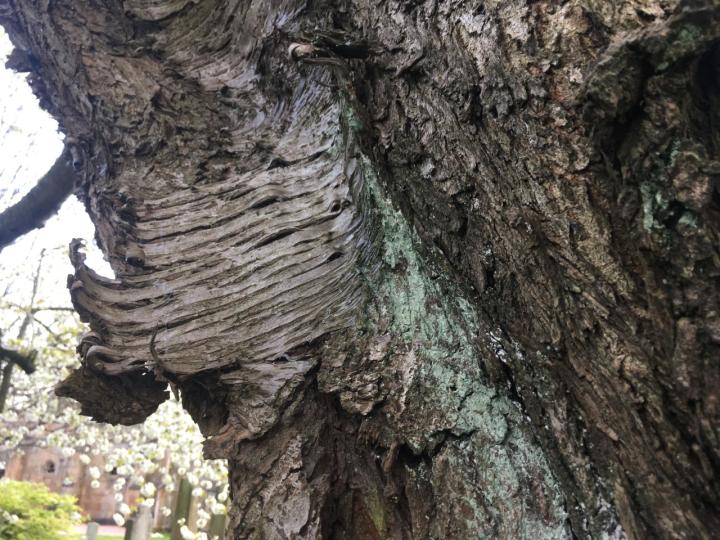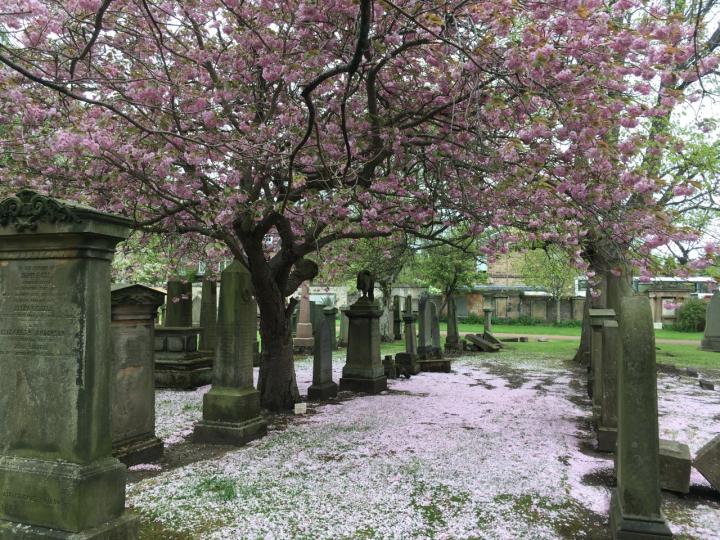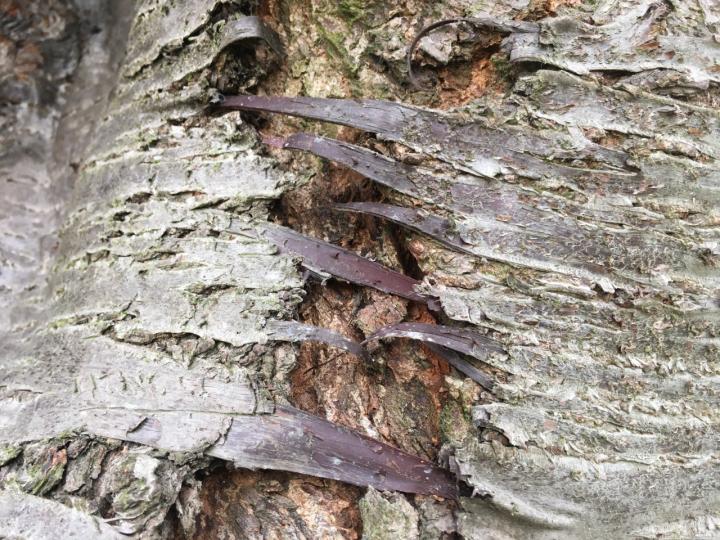Trees I Have Loved
MindLetter post written by Dr Kitty Wheater.
Dear all,
Edinburgh is green and lush, and the ground is soft with pink snow. For many of you, amidst the beauty, exams and marking are biting; for me, a pile of packing boxes in the corner reminds me that I am moving (house, not city, happily).
For this week's MindLetter, I think about the green things we love, and that bring solace and magic - even when, sometimes, we must leave them behind.

Trees I Have Loved
The cherry tree in Grange Cemetery is the biggest I have ever seen. Its trunk is several times my width in girth; its highest white-blossomed branches are a crooked neck out of sight. The many textures of its bark are strange to the fingertips, and impressionistic to the eye. The smooth scrolls of bark that we associate most with cherry trees are like sleek daubs of paint, superficially papery but upon investigation immoveable, a story firmer than words.
It’s taken me two springs to find this tree. Bent as I am each morning on my usual route, it needed me to take a right instead of left, to cut across grass and duck between gravestones rather than follow gravel and the line of periwinkles. Once found, its flowery boughs closing behind me as I approach, I think: have you been here all along? At the time there is joy, and peace as I sit in the crevice between roots and trunk, like a key that’s found its lock, and close my eyes. But later, when I remember that I’m leaving, I feel mournful. This is my last spring in Marchmont, and this cherry tree will soon be out of reach.
There is an old Greek proverb: ‘society grows great when old men plant trees in whose shade they know they shall never sit.’ I think of this when the apple trees on Marchmont Road come into bloom, presaging fruit that any passerby might eat. But something else came to mind last week, as I walked in Kensington Gardens, where the scent of horse chestnuts in bloom brought back a childhood in the Thames Valley, and as I perused the azaleas in Richmond Park, where a small girl wandered with her grandmother a quarter of a century ago. What did the Greeks say about the trees the old men loved as boys – the ones whose shade they may not see again?

There was the apple tree that grew old as I grew up, whose mosses overtook my wooden swing; the horse chestnuts that lined my weekend paths in the park, felled one summer, their pink and yellow blooms lost and replaced by sapling strangers; the blue spruce of a Canadian winter, and rainforests of a British Columbia spring; the majestic beech canopies of inter-chapter runs and lingering walks in Oxford University Parks. Some of the trees I’ve loved most are trees I have never seen: in Richard Mabey’s The Cabaret of Plants, there is a nineteenth-century print of gentlemen and women dancing a tea-dance on the stump of a vast Californian sequoia, the size of an assembly room; the print evokes equal horror and thrill. As a child, Roald Dahl’s Billy and the Minpins had me rapt, and as an adult, paleobiologist Hope Jahren’s Lab Girl took me deep into ancient seeds, the prehistoric promise of a tree. When I find myself too cemented and tarmacked, thwarted or horrified by humans, I summon up my trees like daemons.
And there are times I think they’re summoning us, too. As Sara Maitland describes in her book Gossip From the Forest, funny things happen beneath bark and bough. A friend with an olive and a fig tree in her back garden fell for a Greek Cypriot; the blooming cherries on the Meadows have brought love to countless souls. All manner of mystery and magic happens in Shakespeare’s Forest of Arden, and in the fairy dream of a Midsummer Night. When the horse chestnuts are felled, and the ancient cherry tree is left behind, we mourn the loss of the magic and the end of the dream.
Perhaps we might take comfort from the fact that trees, like dreams, present themselves to us in their own time: the old cherry lurking in plain sight, revealed at last by its coat of fragrant white. Perhaps it’s only right that some discoveries happen right as we are leaving, as if to say, you were right to love this place, and to remind us to look closer in the next.
May you find your own tree, to slot into like a key in a lock, and be part of your story for a while.
Warm wishes
Kitty


